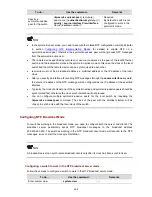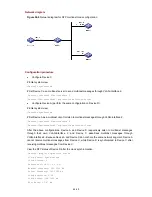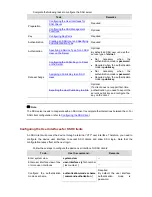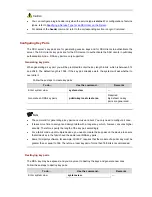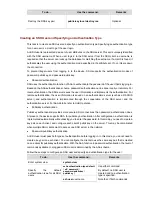
Root dispersion: 208.39 ms
Peer dispersion: 9.63 ms
Reference time: 17:03:32.022 UTC Apr 2 2007 (BF422AE4.05AEA86C)
The output information indicates that Device D is synchronized to Device C, with a clock stratum level of
3, one stratum level lower than that Device C.
# View the information about the NTP sessions of Device D (you can see that a connection is
established between Device D and Device C).
[DeviceD] display ntp-service sessions
source reference stra reach poll now offset delay disper
**************************************************************************
[1234]3.0.1.31 127.127.1.0 2 1 64 377 26.1 199.53 9.7
note: 1 source(master),2 source(peer),3 selected,4 candidate,5 configured Total
associations : 1
Configuring NTP Server/Client Mode with Authentication
Network requirements
z
The local clock of Device A is set as the NTP master clock, with a clock stratum level of 2.
z
Device B is an S4500 Ethernet switch and uses Device A as the NTP server. Device B is set to
work in client mode, while Device A works in server mode automatically.
z
The NTP authentication function is enabled on Device A and Device B.
Network diagram
Figure 54-10
Network diagram for NTP server/client mode with authentication configuration
Configuration procedure
z
Configure Device B.
# Enter system view.
<DeviceB> system-view
# Enable the NTP authentication function.
[DeviceB] ntp-service authentication enable
# Configure an MD5 authentication key, with the key ID being 42 and the key being aNiceKey.
[DeviceB] ntp-service authentication-keyid 42 authentication-mode md5 aNiceKey
# Specify the key 42 as a trusted key.
[DeviceB] ntp-service reliable authentication-keyid 42
# Associate the trusted key with the NTP server (Device A).
[DeviceB] ntp-service unicast-server 1.0.1.11 authentication-keyid 42
After the above configurations, Device B is ready to synchronize with Device A. Because the NTP
authentication function is not enabled on Device A, the clock of Device B will fail to be synchronized to
that of Device A.
54-21


